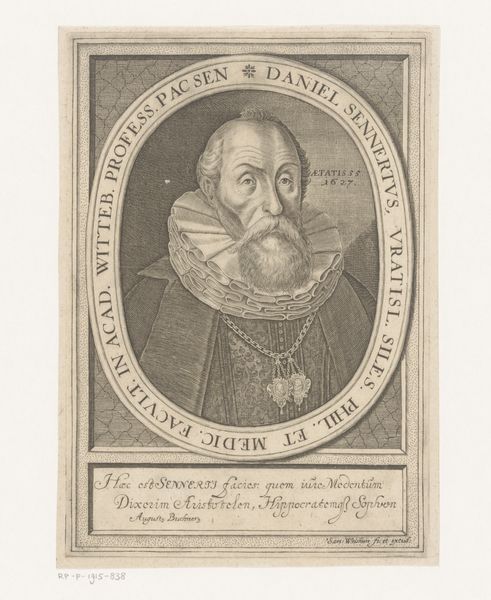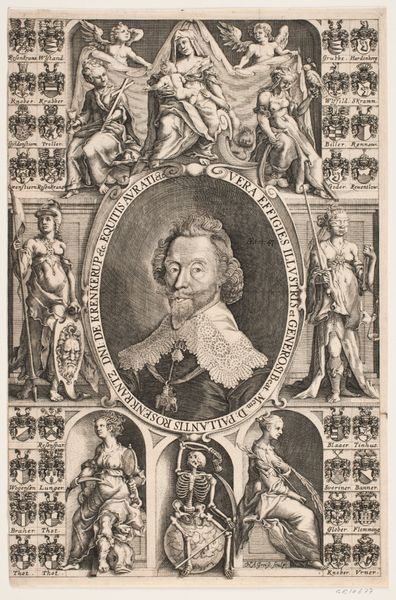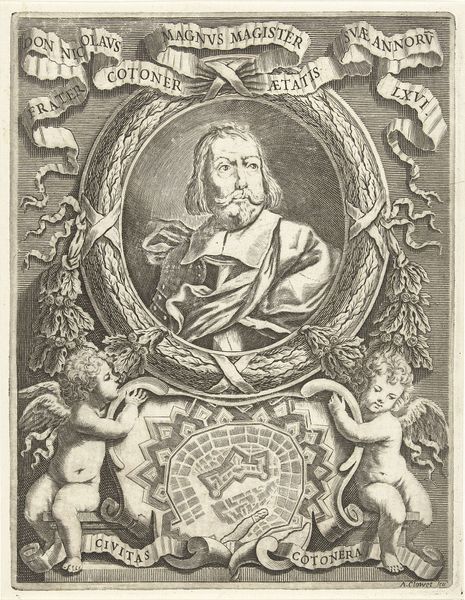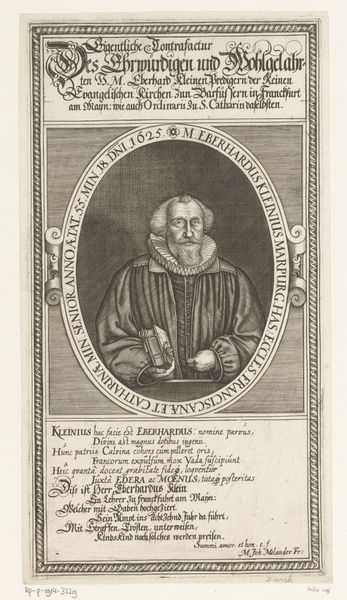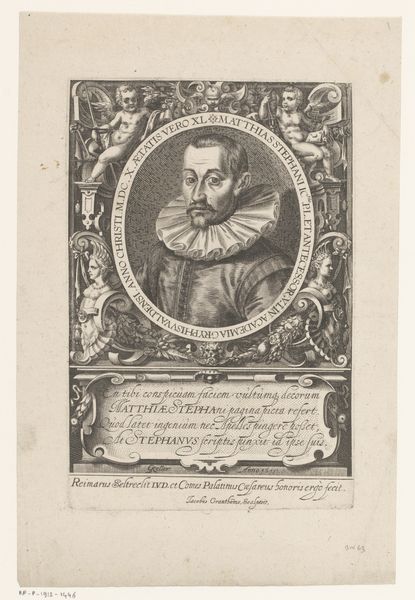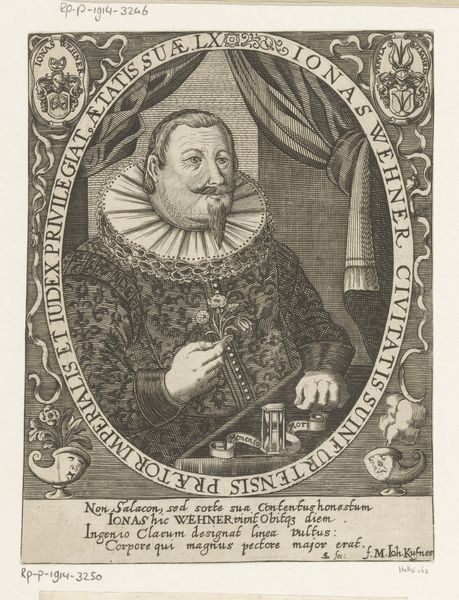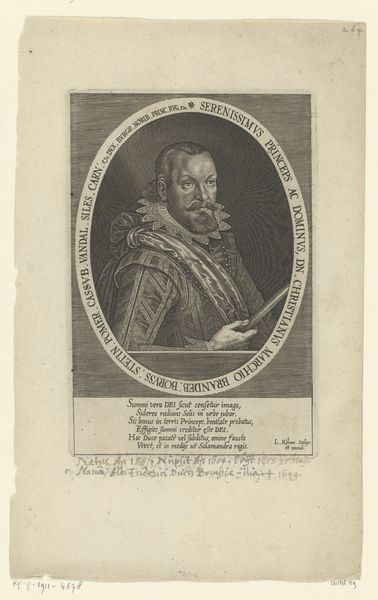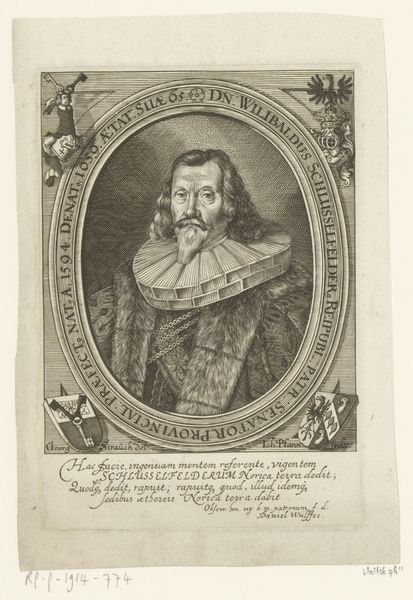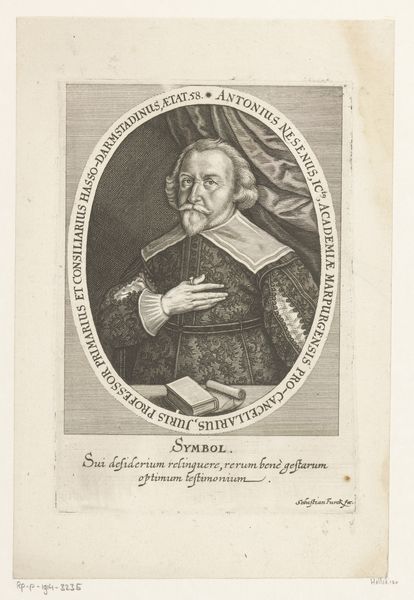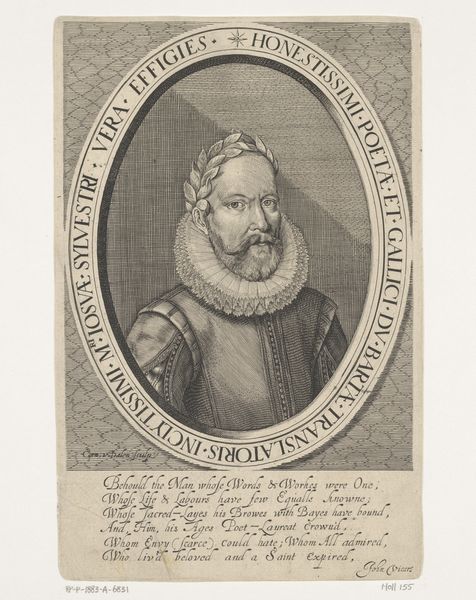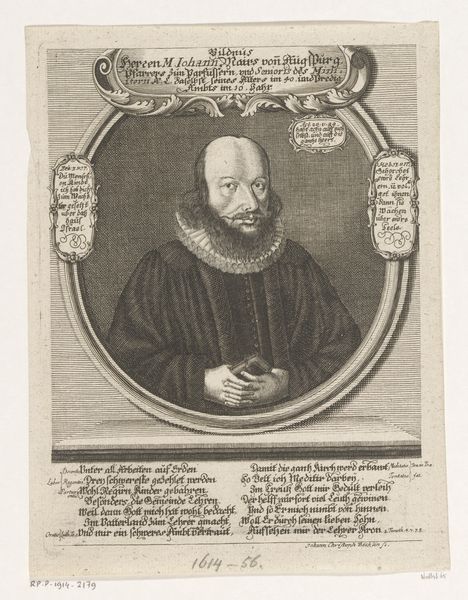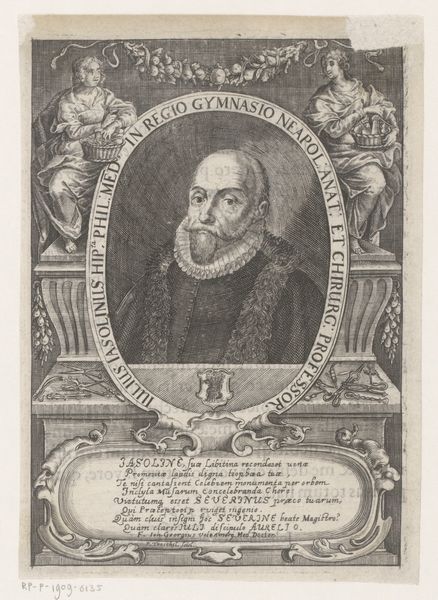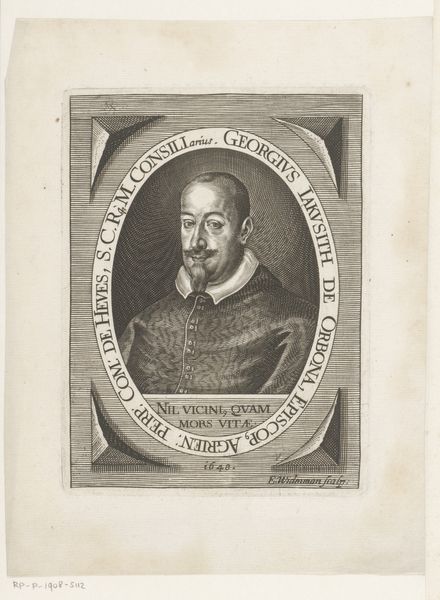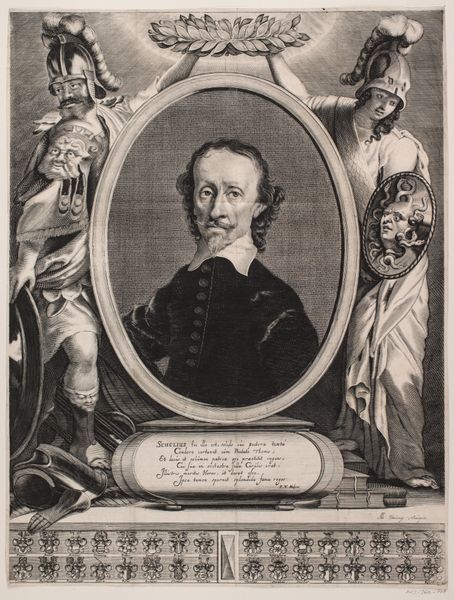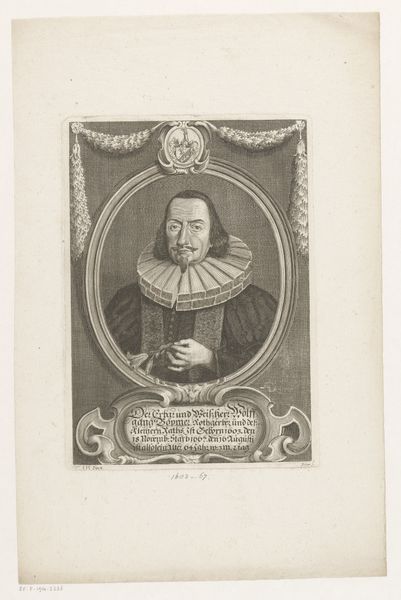
drawing, print, engraving
#
portrait
#
drawing
#
baroque
# print
#
old engraving style
#
traditional media
#
engraving
Dimensions: height 163 mm, width 124 mm
Copyright: Rijks Museum: Open Domain
Curator: This print, "Portretten van Adam Venediger en zijn zoon en kleinzoon," likely created between 1664 and 1672 by Matthias van Sommer, catches my eye instantly. There's a kind of solemn gravity to it, don't you think? Like peering into a lineage of stoic scholars. Editor: Yes, an immediate impression is that of controlled presentation. Note the circular framing of the three portraits. The rigorous geometric containment, balanced by the ornate banner above declaring "TRIGA VENETORUM", suggests the formal intentions of the artist. How does it strike you beyond its initial gravity? Curator: Well, there’s a weightiness that feels very Baroque—those heavy robes, the intense gazes... It hints at ambition, responsibility passed down through generations, a family almost burdened by their own legacy. Each portrait feels so meticulously rendered. Editor: Precisely. Observe how van Sommer employed engraving to delineate textures and surfaces, creating an almost tactile sense of the subjects’ clothing and features. The contrast of light and shadow around the faces pulls out character. The framing of the portraits, with accompanying texts in elaborate detail, anchors each man within specific contexts and, most intriguingly, a continuum. It suggests time and its impacts—visually mapping familial and historical connections within the Venediger line. Curator: Absolutely, it's like each carefully etched line speaks of duty, but look closely—there’s something tender too. Like a fleeting moment of humanity captured within this formal setting, particularly with the family crest at the bottom linking the trio. What could be interpreted from the banner inscriptions and embellishments surrounding the portrait? Editor: I concur. I interpret the additional adornments as being crucial elements in deciphering meaning from Matthias van Sommer’s artistry—serving more than aesthetic functions, they are loaded semiotic units ripe for deeper philosophical consideration. Curator: I’d say pondering over their collective story feels like a gentle nudge, a call for introspection. A reminder that we are each both the product of and contributors to legacies much larger than ourselves. Editor: It's a work that subtly reveals as much about the structures of portraiture as it does about its subjects and creator. Thank you.
Comments
No comments
Be the first to comment and join the conversation on the ultimate creative platform.
